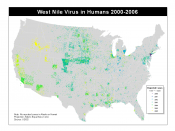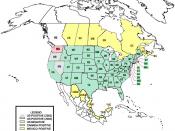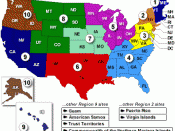This document outlines a common dilemma faced by countless communities every year. It presents a proposed pesticide application program that is awaiting approval from the city council, and its final council member, you, must decide if this pesticide can be used in the hypothetical city, Genericville.
The City and the ProblemGenericville is an American city with an economically diverse population of 100,000 that is highly dependent on summer tourism. A wide river runs through the center of Genericville. Along the banks of the river are several wetlands that serve to protect the city from spring flooding. The wetlands also provide a source of nutrients for several species of birds and fish that are among many environmental elements that make Genericville popular with summer vacationers. Unfortunately, the wetlands also serve as a breeding ground for mosquitoes that may spread diseases like West Nile Virus.
West Nile Virus (WNV) is a dangerous nervous system disease that spreads primarily by mosquitoes.
According to data from the Center for Disease Control and Prevention (2007), there were 4,269 WNV cases in the U.S. in 2006 and 177 were fatalities. Based on experience, recent testing of infected birds and an enlarged mosquito breeding area due to heavy rainfall, there are projections that there could be 50 cases of WNV in Genericville this year with two fatalities. Both the rich and poor communities of Genericville equally share this risk.
The Pesticide Solution and its ProponentsA wealthy city resident who suffered a family loss from WNV a couple of years ago has offered to provide Genericville with all funds necessary to implement an extensive program of aerial spraying and ground application of the pesticide, Malathion. The proposed program could reduce the mosquito population by 90%, providing the same reduction in risk of WNV. This would mean that...


